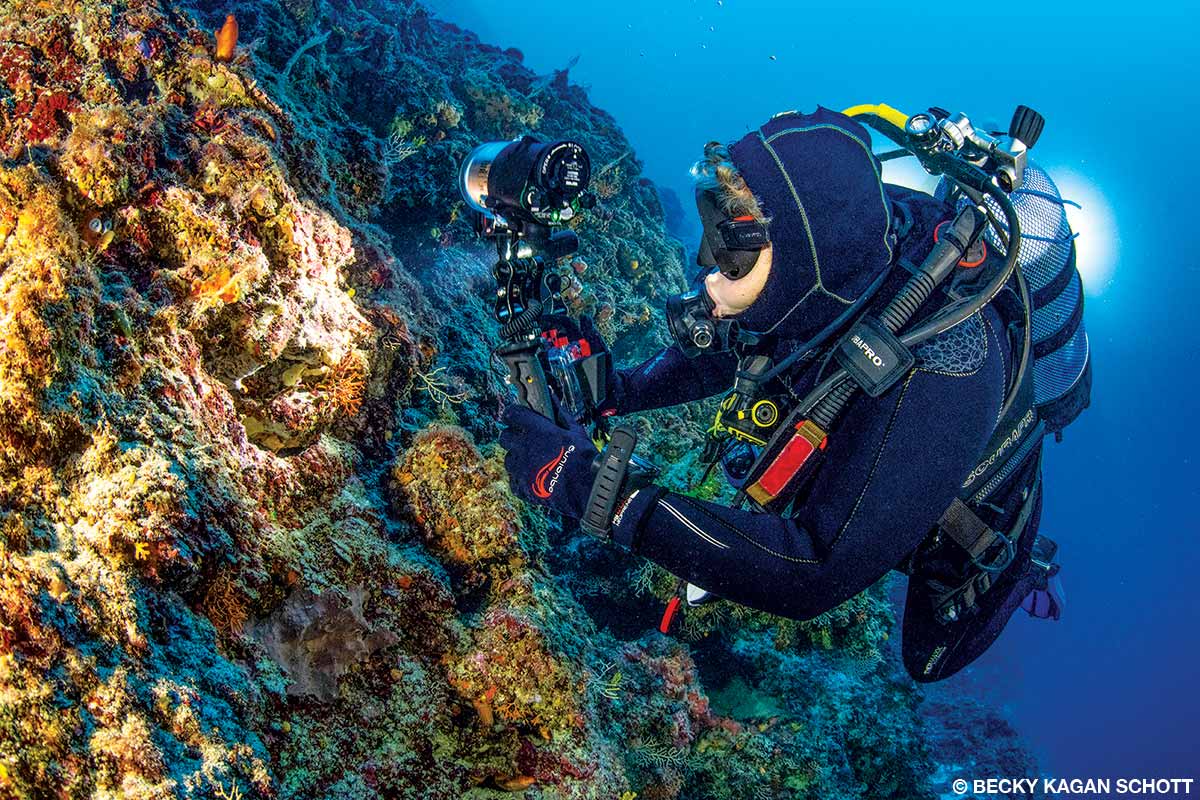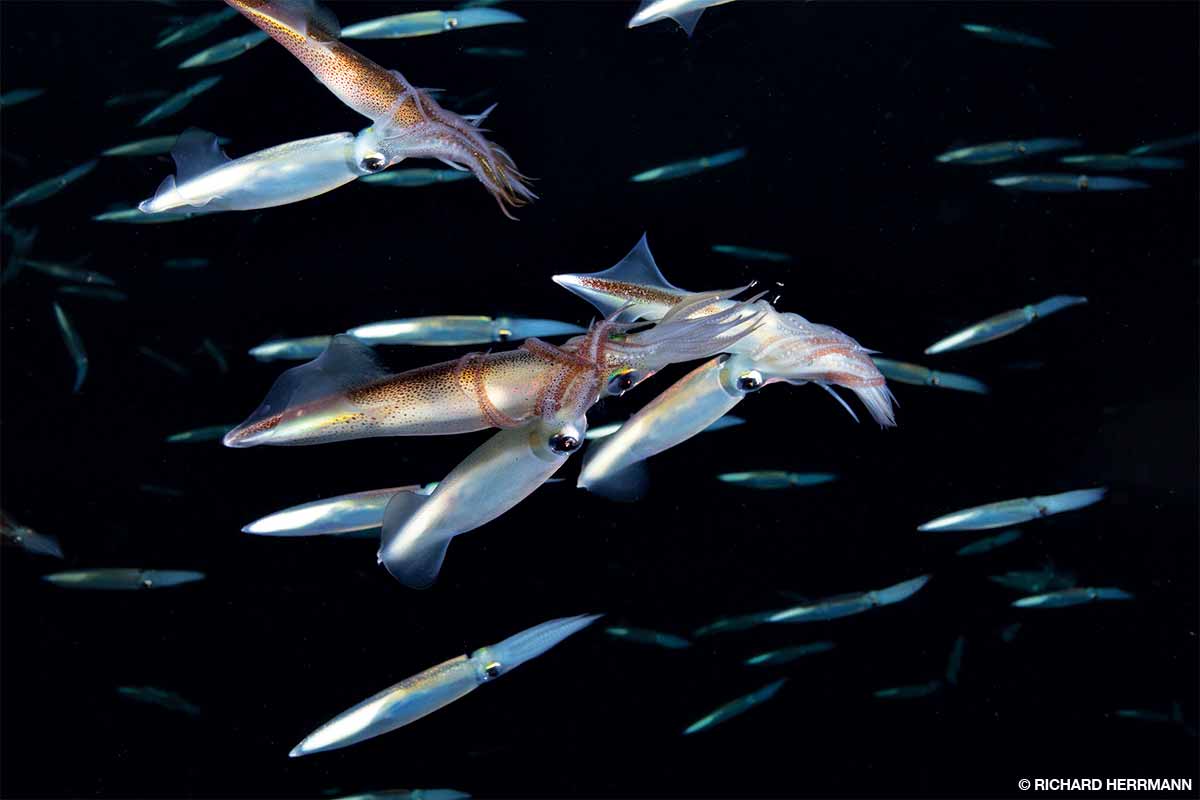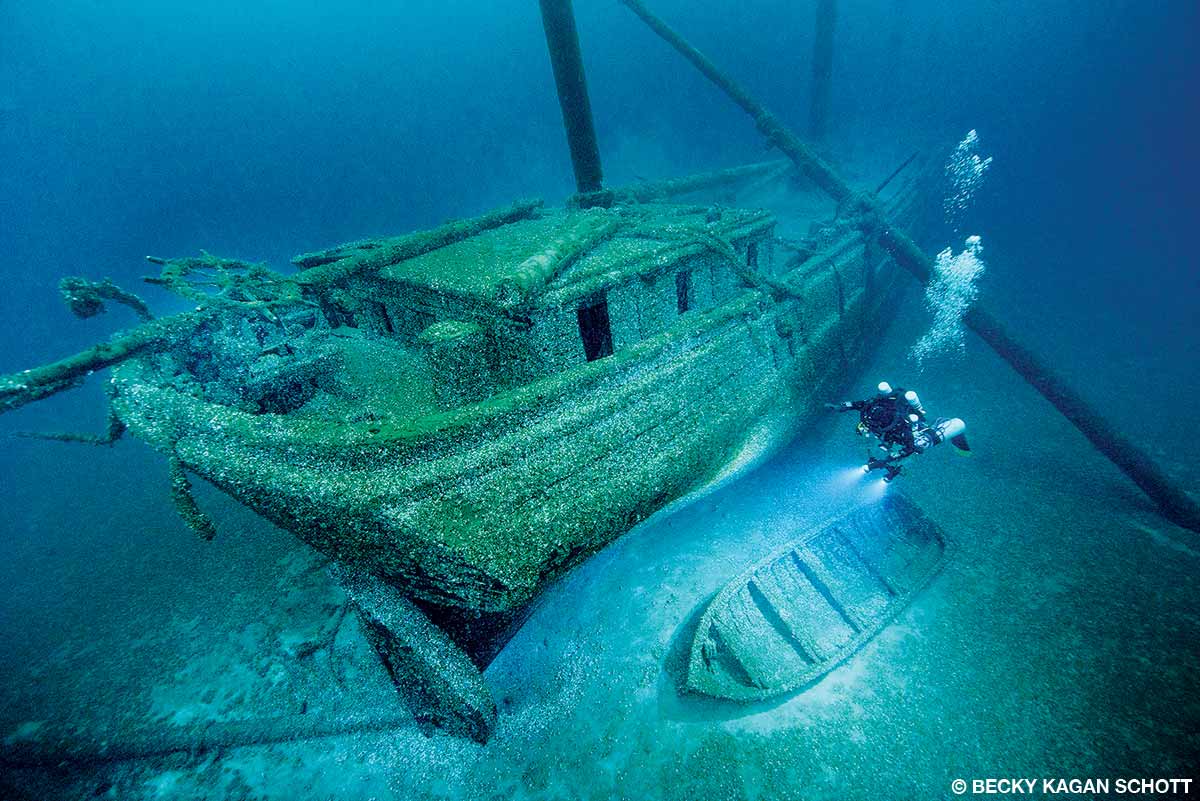Gloves are one of the most overlooked and individualized pieces of dive equipment. When choosing gloves, consider the kind of diving you plan to do and what you expect from your hand protection. When selecting gloves, consider the following factors: thermal protection, fit, dexterity, hazard protection, impact resistance and materials.
As you drop into water as black as night, thousands of pulsating squid in search of mates suddenly surround you. Mating activity is everywhere as multiple males attack single females. The excited squids’ chromatophores (pigment cells) flash colors reminiscent of a Las Vegas neon sign and put you in the middle of a living, moving light show. The action is so frenetic that animals are in your gear and bounce off every inch of your body.
Thunder Bay National Marine Sanctuary in Lake Huron off the northeastern coast of Michigan has nearly 100 known shipwrecks, and others are still being discovered. The oldest shipwreck there sank in 1849, but many wrecks are from the mid- and late 1800s to the early 1900s. The location, history and variety of ships — from wooden schooners to freighters — make Thunder Bay special. The wrecks are at various depths, ranging from the snorkel zone to recreational and technical diving levels.
For more than five years, divers and scientists along the U.S. West Coast have watched a disaster play out before their eyes. Sunflower sea stars fell victim to a wasting disease, which wiped out roughly 90 percent of the global population in 2013. Seven years later, scientists see no signs of recovery. Without the sea stars, the population of purple urchins that sea stars eat has exploded and mowed down entire forests of bull kelp. The West Coast experienced intense ocean warming from 2014 to 2017, and by 2015 divers began seeing urchin barrens — vast swaths covered in piles of spiny creatures and little else.
For the founders of three of Indonesia’s dive resorts, the mission was clear: Protect the region’s natural resources by providing economic, educational and environmental benefits while empowering residents to participate in the process. These visionaries blazed a path for a “blue economy” — ensuring sustainable use of ocean resources while promoting economic growth and improved livelihoods for the people who live there.
Ocean literacy is important for the public to make informed decisions about ocean restoration efforts and to take increased individual responsibility in those efforts. Younger generations are crucial for developing an ocean literate society, but adequate ocean science education is a challenge for underserved and underfunded schools. Informal educational opportunities run by the Black Girls Dive Foundation (BGDF) fill the knowledge gap and are a resource for environmentally minded students.
At the Maritime Aquarium in Norwalk, Connecticut, nudibranchs have become storytellers for an issue facing our oceans that is difficult to understand yet imperative to know about: global climate change. The aquarium has taken a unique approach to educate the public on this global threat. Their new exhibit, A Slug’s Life: Facing the Climate Endgame, showcases the adored mollusk and runs through Sept. 6, 2021. The exhibit’s specific intent is to help guests understand the warnings that changing slug populations provide about the health of their habitats.
Dive legend Tec Clark has built a memorable career and legacy around training excellent divers. He describes his underwater experiences as “absolutely worshipful” and “otherworldly.” It’s the place where he feels closer to God than anywhere else on Earth. Helping others safely and professionally experience this same life-changing magic is his focus. Clark summed up the philosophy behind all his advice to new dive professionals: “Great training is the key to great diving. Don’t cut corners. Offer excellent training. Go beyond the standard.”
Many divers love to travel. As more destinations open to travelers, divers are eager to get back in the water at their favorite site or a new location. Read these tips for traveling with scuba equipment and planning ahead to determine what vaccinations and medical documentation your destination requires.
After taking time away from diving, whether for a few months or even longer, divers should assess several essential factors to help them safely get back in the water. DAN’s new Return to Diving initiative is a comprehensive, practical guide developed by dive medicine physicians, scientists and researchers to provide the knowledge needed to make informed decisions. The guide contains six sections, each with detailed step-by-step instructions and tips. Topics include issues stemming from inactivity, your health status, fitness to dive, equipment, dive skills and travel plans.



